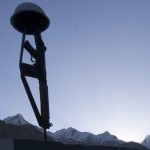There are no doubt a few examples of disabled defence personnel, who have opted to continue in service and competed successfully with their able-bodied colleagues, but their cases need to be looked at as exceptions and not the rule. The financial condition of most disabled defence persons is pitiable, exceptions notwithstanding. This can only be mitigated by an appropriate financial package, as has been recommended.
For the purpose of all types of concessions, monetary or in kind, there should neither be differentiation between those retained in service and those boarded out, nor relative to different wars and operations in which they were disabled. Thus, a person losing his leg in the 1965 Indo-Pak War or 1971 India-Pakistan War or in the1999 Kargil War or in any other war or operations against insurgents, terrorists, militants etc., must get monetary compensation at the same level. This is also applicable to the NOK of all martyrs, irrespective of the war or warlike operations in which they sacrificed their lives.
A person losing his leg in the 1965 Indo-Pak War or 1971 India-Pakistan War or in the 1999 Kargil War or in any other war or operations against insurgents, terrorists, militants etc. must get monetary compensation at the same level.
As a rule, therefore, all war disabled personnel must be treated at one level, not in accordance with the war or war-like situation in which they had fought. Neither should there be any differentiation between those who opt to remain or are retained in service and those who are boarded out.
War Injury Pension
The present method of fixing war injury pension, as a lumpsum for 100 percent disability and proportionate amounts for disabilities less than 100 percent, is meaningless as the value of such pension gets eroded very fast.
The war injury pension must be related to the pay, including dearness allowance for all war disabled personnel. It must be granted at the rate of salary last drawn, but not less than the salary of a Havildar in the case of Other Ranks, not less than the salary of a Subedar Major in the case of JCO’s; and not less than the salary of a Colonel in the case of officers, for 100 percent disability. The rationale is that these are the ranks that the person would have reached if he had not been disabled in war or war-like-operations. For those assessed below 100 percent disability, it should be proportionate to the two lower slabs of disability, viz. 75 and 50 percent respectively. This must be applicable to all war disabled personnel, irrespective of whether they are retained in service or are boarded out on medical grounds.
Constant Attendance Allowance
For seriously disabled personnel, with 100 % disability, the Constant Attendance Allowance must be granted as hitherto fore, but not at the ridiculously low rate of Rs 600 per month. Constant attendance implies round-the-clock attendance, which means three eight hourly shifts per attendant, per day. The Constant Attendance Allowance must not be a lumpsum, as the value of any sum granted will be eroded within one year. Instead, the allowance should be a percentage of total pension i.e. combination of service element and war injury element. The recommended rate of Constant Attendance Allowance for all ranks is 25 percent of the total pension or Rs. 6000, whichever is more.
For seriously disabled personnel, with 100% disability, the Constant Attendance Allowance must be granted as hitherto fore, but not at the ridiculously low rate of Rs 600 per month.
Conveyance Allowance
All war disabled personnel, whether retained in service or boarded out, must be authorised Special War Disabled Conveyance Allowance at the rate of 25 percent of their pay or total pension (i.e. service element plus war injury element), as the case may be. Increase of Dearness Allowance, to offset increased cost of living, must also be applicable. It needs to be appreciated that war disabled personnel have special needs of transportation, unlike their able-bodied colleagues.
There are two facets to their conveyance requirements. Firstly, war disabled personnel require modifications to ordinary vehicles, which may be four wheelers or two wheelers. This implies enhanced cost for buying the vehicle and enhanced wear and tear to the vehicle. In addition, a large number cannot drive any vehicle, because of their disability and, therefore, need to be driven by another person. This again implies enhanced cost of running of vehicles.




